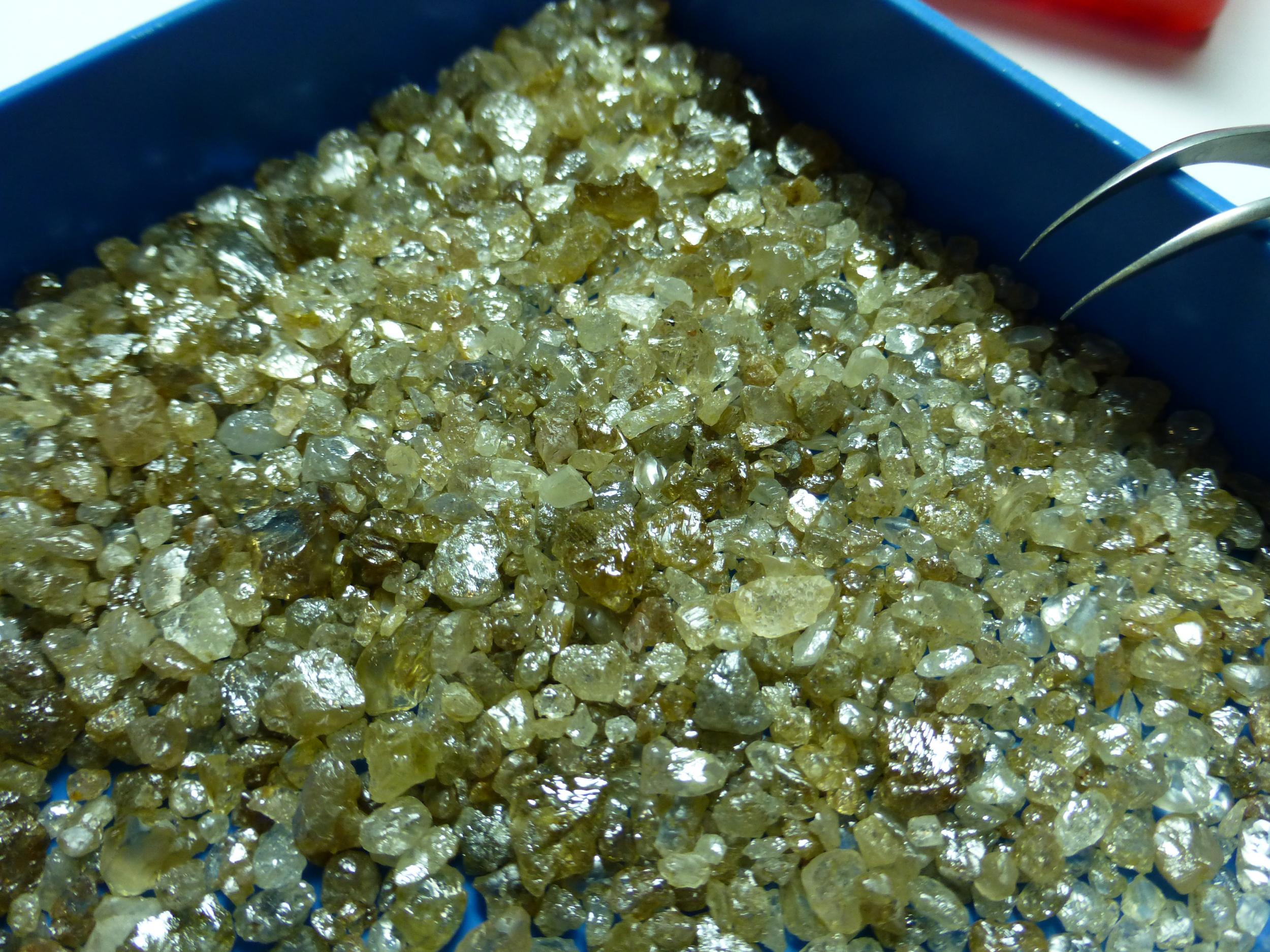Stash of ancient diamonds is discovered near the Earth’s core
Diamonds lay undisturbed for 4.5 billion years before being brought to the surface by violent volcanic eruption
Your support helps us to tell the story
From reproductive rights to climate change to Big Tech, The Independent is on the ground when the story is developing. Whether it's investigating the financials of Elon Musk's pro-Trump PAC or producing our latest documentary, 'The A Word', which shines a light on the American women fighting for reproductive rights, we know how important it is to parse out the facts from the messaging.
At such a critical moment in US history, we need reporters on the ground. Your donation allows us to keep sending journalists to speak to both sides of the story.
The Independent is trusted by Americans across the entire political spectrum. And unlike many other quality news outlets, we choose not to lock Americans out of our reporting and analysis with paywalls. We believe quality journalism should be available to everyone, paid for by those who can afford it.
Your support makes all the difference.An ancient reservoir of diamonds that is older than the moon has been discovered near the Earth’s core, more than 410km below the surface.
The diamonds had lain undisturbed for more than 4.5 billion years before being brought to the surface by a violent volcanic eruption in Brazil.
An international group of scientists measured helium isotopes – different atomic forms of helium – in the diamonds to find the ancient reservoir, according to a study published in Science.
Researchers say they acted as “perfect time capsules” that gave them an insight into the tumultuous period shortly after the planet formed. During this period there was so much violent geological activity that almost nothing of the young planet’s original structure remained.
However, amid all this change, it had long been suspected there was an area of the mantle somewhere between the crust and core which had been relatively undisturbed. Until now, there was no proof it existed.

The first clues came in the 1980s when scientists noticed some basalt lavas from particular locations had a ratio of helium-3 to helium-4 isotopes that was higher than usual. What was particularly interesting was that this ratio mirrored the isotope ratio found on early meteorites that had crashed into Earth.
This suggested the lava had come from some deep reservoir in Earth which hasn’t changed for billions of years.
“This pattern has been observed in ‘ocean island basalts’, which are lavas coming to the surface from deep in the Earth, and form islands such as Hawaii and Iceland,” said Dr Suzette Timmerman, from the Australian National University, who led the research.
“The problem is that although these basalts are brought to the surface, we only see a glimpse of their history. We don’t know much about the mantle where their melts came from,” said Dr Timmerman.
To find out more, researchers studied helium isotope ratios in super-deep diamonds that formed between 150 and 230km below the Earth’s crust. “Diamonds are the hardest, most indestructible natural substance known, so they form a perfect time capsule that provides us a window into the deep Earth,” she said.
“We were able to extract helium gas from 23 super-deep diamonds from the Juina area of Brazil.
“These showed the characteristic isotopic composition that we would expect from a very ancient reservoir, confirming that the gases are remnants of a time at or even before the moon and Earth collided.”
By studying the diamonds, scientists could tell they came from an area called the ‘transition zone’ which is between 410 and 660km below the surface of the Earth.
“This means that this unseen reservoir, left over from the Earth’s beginnings, must be in this area or below it,” said Dr Timmerman.
No one knows the size of the reservoir and they believe there could be more than one of them.
Professor Matthew Jackson from the University of California, Santa Barbara, who was not involved in the research, said the result was “interesting” and would help scientists map out where these ancient domains are in the Earth’s deep interior.
“This work is an important step towards understanding these reservoirs, and points the way to further research,” he said.
Scientists will present their work at the Goldschmidt conference in Barcelona later this month.

Join our commenting forum
Join thought-provoking conversations, follow other Independent readers and see their replies
Comments